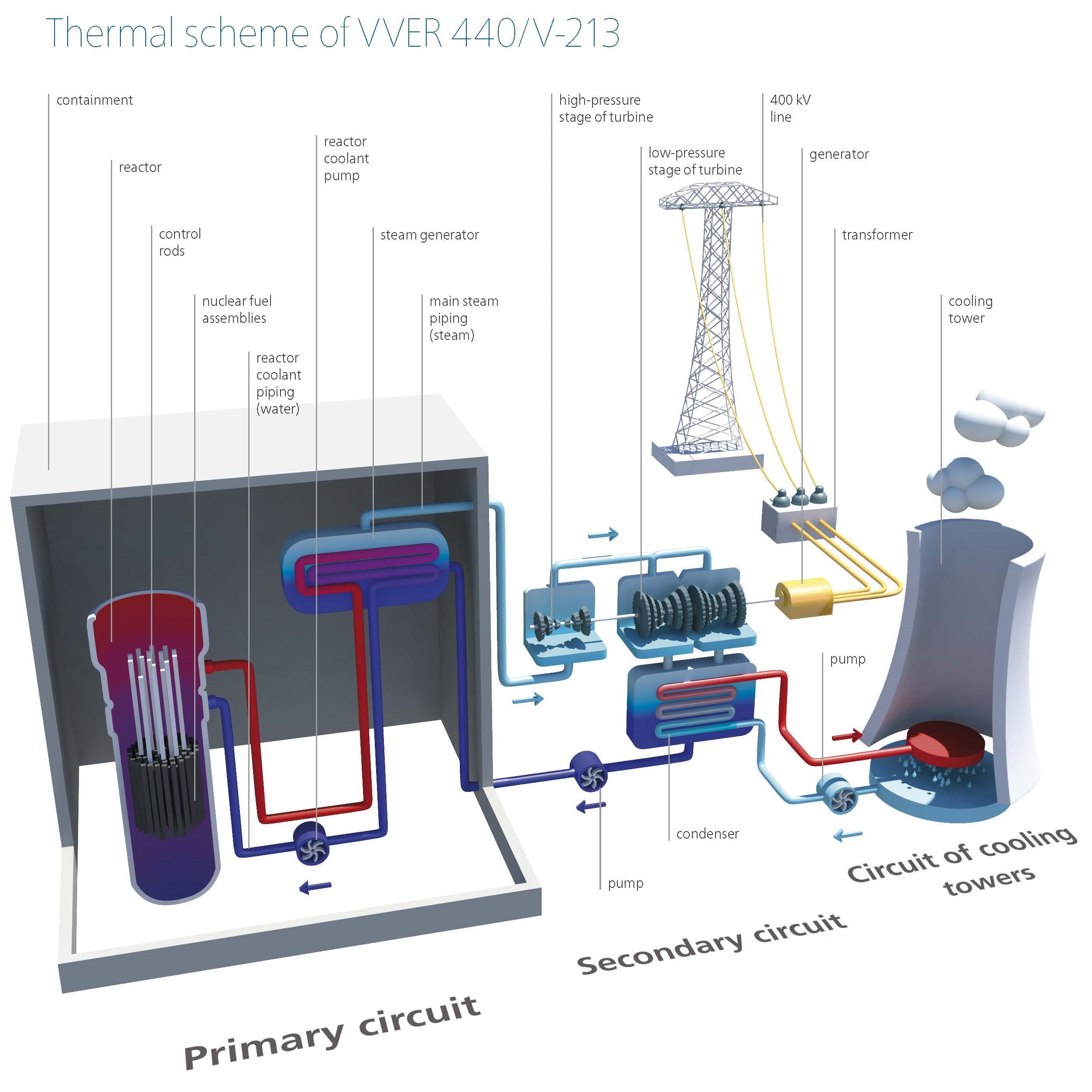Nuclear power plants in Slovakia have been exploited since 50 years ago and belong to low-carbon technologies, i.e. no greenhouse gases are released into the atmosphere during their operation. They are the basic pillars of the Slovak energy grid.
Four reactor units – two at Bohunice NPP and another two at Mochovce NPP, – supply more than half of electricity consumed in Slovakia.
All four units feature pressurised water reactors, type WWER 440, with high level of safety ensured by robust design with 1.5 m thick reinforced concrete containment, huge volumes of cooling water and triple redundancy passive and active safety systems (3 x 100%), and meet the most stringent international nuclear safety requirements.
All the units have been backfitted with the latest measures to manage “severe accidents”.
The principle of electricity generation in nuclear power plants is similar to that of conventional thermal power plants. The only difference is the heat source. In thermal plants, heat is produced from fossile fuels (coal, gas), generating wast quantities of greenhouse gas, whereas in nuclear power plants nuclear fuel is used (natural or enriched uranium).
In the pressurized water reactors, fuel in the form of fuel assemblies is placed in reactor pressure vessel to which chemically terated water flows. The water flows through channels in the fuel assemblies and removes the heat that is produced during fission reaction. Water coming from the reactor has a temperature of about 297°C (VVER reactor type); it is then led through the hot arm of the primary piping into heat exchanger - steam generator. In steam generator, water flows through a bunch of pipes and delivers the heat to water from secondary circuit and has a temperature of 222°C. When cooled down, primary circuit water is led back to reactor core. Secondary circuit water is evaporated in steam generator and the steam is led via steam collector to the blades of a turbine. The turbine shaft turns a generator that generates electric energy.
Having delivered its energy to the turbine, steam condensates in condenser, and getting back to water state, it flows back, via heaters, to steam generator. In condenser, the mixture is cooled by a third cooling circuit. In this latter circuit, water is cooled by air flowing from the bottom to the upper part of the cooling tower due to so-called chimney effect. The stream of air takes along water steam and small water droplets, and that is why clouds of steam form above the cooling towers.
